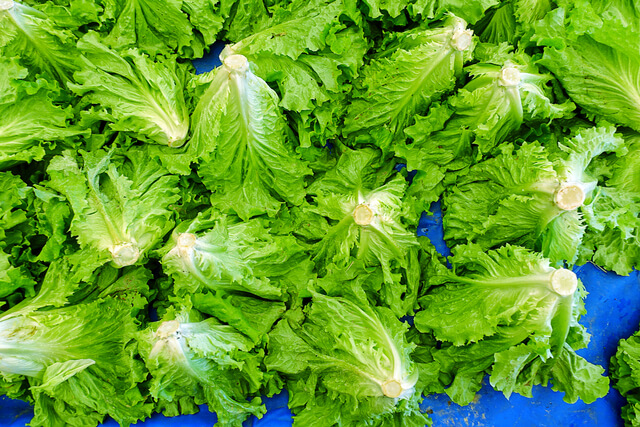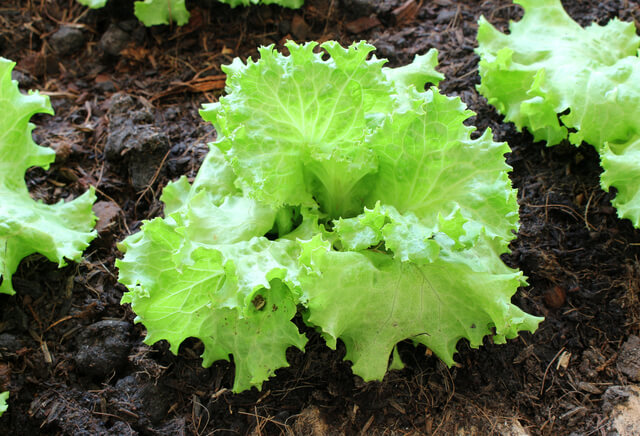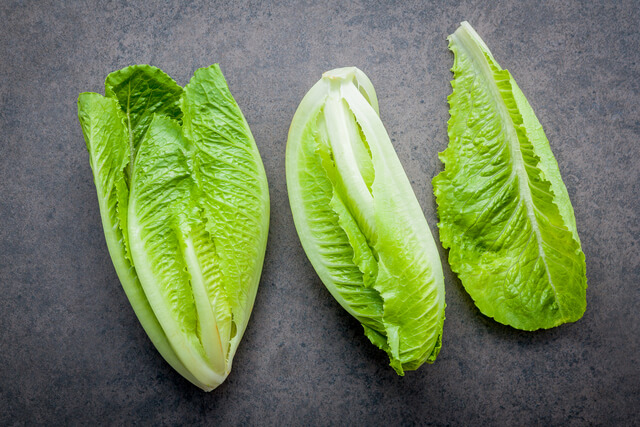Lettuce is also commonly called garden lettuce. The scientific name of Lettuce is Lactuca sativa. Lettuce belongs to the family of Asteraceae.
This is an annual vegetable that is easy to grow and a classic plant for experienced as well as beginner gardeners.
Lettuce is a fast growing vegetable and mainly grown in the cool season. Lettuce comes in enormous varieties, the majority of which grows in five to eight weeks.
It is a continuously growing crop which means you can cut the leaves and use it in your salads anytime you want.
Lettuce has many health benefits as it is rich in vitamins, minerals and nutrients and is more flavorful. Click To TweetLettuce has many health benefits as it is rich in vitamins, minerals and nutrients and is more flavorful.
Lettuce plants are native to the Mediterranean region and can be grown in USDA Hardiness zone 2-11.
Types of Lettuce
The lettuce is divided into four different and distinct groups mainly for practical purposes. So here is the brief description of four types of lettuce.
Crisphead
The head is firm and the veins are distinct. A variety called Iceberg is the most commonly cultivated commercial variety.
Butterhead
The texture of the head is more soft and pliable, with less defined veins than that of the crisphead.

Looseleaf
Rather than forming a head, it forms a kind of bunch. From a cut head of lettuce, the leaves can regrow without losing any of the flavor or texture.
Cos or Romaine
Despite looking coarse, its leaves are actually quite tender. It is a long, narrow plant.
Lettuce is grown mainly through seeds.it can grow 6 to 12 inches tall and wide. Here is a detailed guide on how to grow your lettuce crop at ease. Click To TweetGrowing guide
Lettuce is grown mainly through seeds.it can grow 6 to 12 inches tall and wide. Here is a detailed guide on how to grow your lettuce crop at ease.
At first you need to prepare a potting mix soil if you are growing lettuce in a
container or if you are growing it in the ground, then apply vermicompost so that the soil becomes fertile.
Then sprinkle the seeds all over the area with a distance of 1 inch from each other. Make sure that the place gets enough Sunlight for better seed germination.
Water the soil thoroughly, so that the soil remains moist but not wet. Overwatering will hamper the root development process.
For better germination of seeds, there are some basic requirements, such as an adequate amount of Sunlight, and the soil should remain moist.
The optimum temperature range is between 18 degrees celsius to 22 degrees celsius. The seeds start to germinate in about 10 days of sowing.

You will notice small seedlings with 2 to 3 tiny leaves growing out of them. Make sure to regularly trim the plant i.e picking 2- 3 leaves so that there will be enough space for other leaves to grow.
So here comes another process of growing. If you have planted your seeds in a container then this is the time to transplant the plant to another container or to the garden outside.
If you have sown the seeds directly in the ground then no need to shift the plant anywhere.
For transplanting you need to follow some basic steps which I have discussed in detail below.
So first of all transplanting should be done after 20 -25 days of sowing and you need to completely stop watering two days before transplanting.
Always try to carry out the transplanting process in early evening hours in order to protect the plant from any harm.
Make sure to well prepare the soil before transplanting by adding manure and you can also use straw mulch to retain moisture in the soil.
After transplanting, cover them up for around 5 to 6 days , so that the saplings can undergo faster recovery from transplant shock and look healthy again.
Caterpillars or Grasshoppers may attack your lettuce plant at this point of time, so the best remedy is to spray neem oil all over the affected parts.
Fertilizer should be applied at this stage when the lettuce plants are growing, so you can use an organic fertilizer made out of your kitchen waste that will do wonders to your lettuce plant.
You can grow lettuce along with various crops that will complement the plant such as Thyme, Oregano, Basil, Tomatoes, Peppers, Broccoli, Cabbage.
Caring guide
Soil
Lettuce prefers well drained loamy soil that is rich in organic matter content. The optimum soil pH should be neutral to acidic.
Light
This plant prefers adequate direct Sunlight to grow healthy, at least six hours of Sunlight is required.
During the warm season, it requires partial shade as too much exposure to direct Sunlight might make the plants weak.
Water
The soil should be kept moist the whole of the time, but not wet. So it is best to water them regularly. Overwatering will cause the roots to develop weakly.
And under watering i.e too much dry soil will lead to sun scorching of leaves.
Temperature and Humidity
Lettuce is a cool season vegetable so the optimum temperature requirement for this plant to grow is 45 and 70 degrees Fahrenheit.
Bitter leaves develop in warm weather and it cannot tolerate freezing temperatures too, although it can tolerate light frost conditions.

Fertilizer
Lettuce requires a good amount of fertilizer during its growing period, hence fertilizing your plant once every 3 weeks is best.
Nitrogen is required relatively in more quantity as it will enhance vigorous and healthy leafy growth.
However a good amount of organic fertilizers works wonders for this plant, you can also use household kitchen waste as they are rich in organic matter content which these plants love to grow in.
Lettuce is a continuous growing annual plant. So more harvesting will lead to more production of healthy leaves. Click To TweetHarvesting
Lettuce is a continuous growing annual plant. So more harvesting will lead to more production of healthy leaves.
The best time to harvest is during morning hours as the leaves of the plant tend to be more plumpy and crispy.
Usually the harvesting is done when the leaves reach to a size of 6 inches. Harvest the outer leaves that are already mature and leave the inner leaves.
Young leaves are more flavorful so they can be harvested to use in salads that adds crispness and more flavor.
Storage
Leafy vegetables taste best when eaten fresh, however it is quite tricky to keep them fresh for longer hours.
But still there is a way to keep them fresh. You can wrap the leaves in a tissue paper or in a newspaper and keep it inside a refrigerator.This way it can remain fresh for some weeks i.e 1-2 weeks at least.
Propagation
Lettuce can be propagated from scraps. Though you cannot get the same size of lettuce from this, it can definitely give you more lettuce plants.
First you need to cut the lettuce leaving the bottom about an inch bearing leaves. Then put these in a shallow container that contains water.
Regularly change the water to avoid contamination. You will notice roots and leaves growing out of the base in a week or two.
Transplant the plant into a container and then harvest the leaves in about two weeks.
Conclusion
As you have read so far, you must have got some idea on how to grow lettuce at your home easily.
These microgreens contain a houseful of vitamins and minerals that are essential for our health. They are a great addition to your salads.
Hence, this is a leafy vegetable that is mainly grown as a salad crop. Lettuce is among the few vegetables that can be grown both in ground as well as in container.
So, you should definitely try your hands to grow these wonderful leafy vegetables at your home and enjoy its freshness.
You may also like to read
A Best Guide on Growing and Caring of Brinjal (Eggplant) Plant
A Complete Guide on Ornamental Cabbage- Planting to Harvesting






